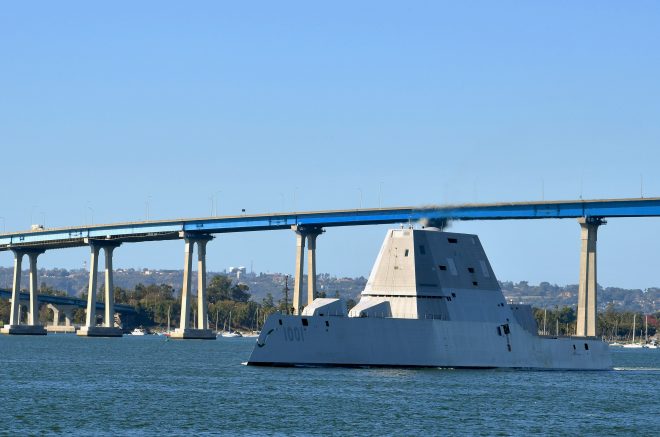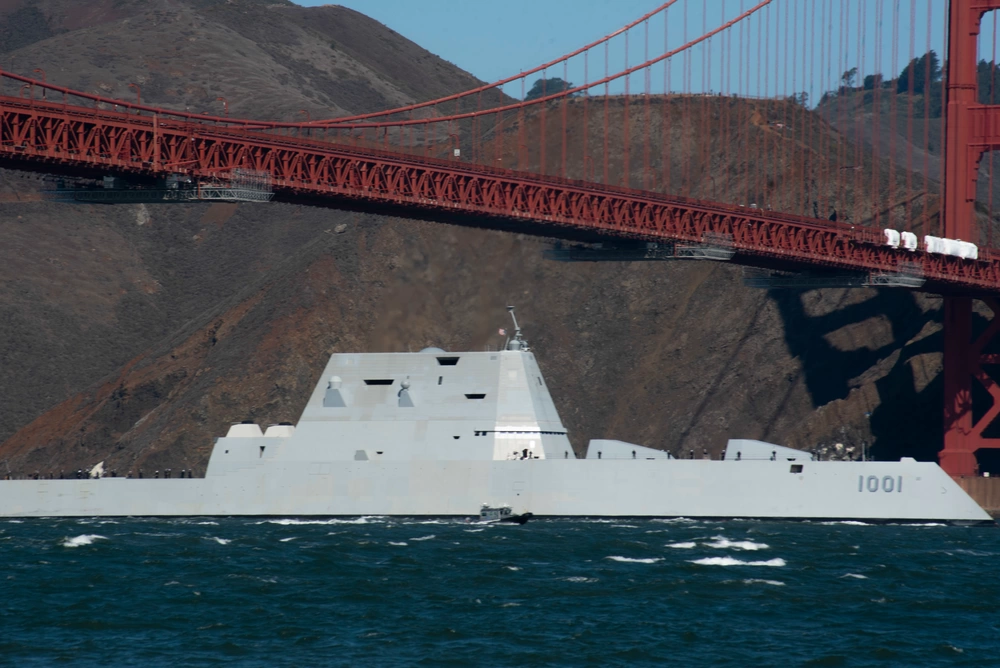Firefinder
ACCESS: Top Secret
- Joined
- 5 October 2019
- Messages
- 1,049
- Reaction score
- 1,902
The guns you have a point on. But for the missiles, remember that the Burkes generally carry about 8 to 16 SM3s. Which while are useful as is the SPY3 can't see well enough to be actually useful on the Zumwalts. So the SM3s that a Burke has will not be on a Zumwalt, add in the fact that their limit amount of ARSOC, less then 400 right from what I heard, and the Zumwalts limited sonar... That is anywhere from 16 to 32 missiles the Zums will not have cause it can not use. So it still carry a similar amount of SAMS and ground attack weapons that the Burkes do.At moment the unique AGS 155mm guns non-operational due lack of any ammunition and only 80 VLS cell vs $2 billion Burke's 96.
90% that is a law issue. Basically for any new hull design the navy NEEDS to through ALL the fucking hoops for getting a new ship class. Basically the Navy can't say anymore that they want the ZUMWALT Hull with X, they have to do the whole dog and pony show to give all the manufactures a fair stick. Remember that the NON STANDARD is going to apply to any new hull design, tumblehome or not. Its part of the cost of being a new design.Navy not saying why its not the basis for the DDG(X) even though Zumwalt has the integrated electric power system which Navy wants for the DDG (X) for its DEW, lasers etc, as have posted previously think reason is its the additional ~ 60% displacement/very expensive costs incurred with Zumwalt's non-standard/unique tumblehome hull.
Again 95% that while the SPY3 is a good air/ground search sensor... Any new surface combatant hull will need to be ABM capable and the SPY3 does not have the range to do that cause of the size, the face is half the size of the SPY1 Face. It literally can not do ABM search like the SPY1 or newer SPY6 can. Its not design for it, if it the Spy4 was install it be fine cause ABM was part of the SPY4 design job while the SPY3 was horizon search and fire control only system.Navy has never explained why Zumwalts new Raytheon X-band SPY-3 radars are unfit for purpose (also fitted on Ford).
Basically the SPY3 even with the mods it got LACKS THE RANGE that the SPY1s or hell the NTU ships have.
The Navy has pushed back the Shock trails dates for years before on other classes. The Nimitz class for example didn't get theirs until Congress schedule for them with the Teddy IRCC. Hell the LSC didnt get theirs until almost 10 years later, same with the Burkes and Ticos. Generally speaking the Navy seems wants to be a few ships in with more under constuction before they do shock trails. Plus they prefer to have all the other tests down so they have a good baseline to go off of. Something that the Zumwalts lack at the moment.Navy has refused to subject Zumwalt FSST, full ship shock trials, understand FSST is a mandatory test for new surface ships and suburmarine classes unless given explicit authority to exempt by Congress, which Navy did not receive.
Also consider that they are probably going into a fairly large refit, they may be waiting to get all the new toys before doing the trials since why do them with the systems that will not be installed? It will literally make the trails useless since they will have no base line to compare against and will not have the data on how the new gear that the hulls will deploy with will react to shock.
Last edited:







